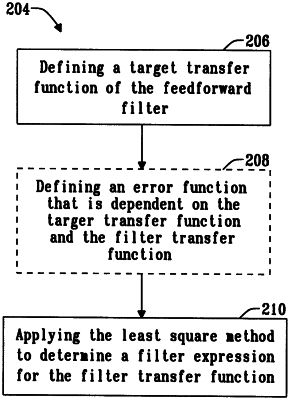| CPC G10K 11/17854 (2018.01) [G10K 11/17881 (2018.01); G10K 2210/1081 (2013.01); G10K 2210/3026 (2013.01); G10K 2210/3027 (2013.01); G10K 2210/3028 (2013.01)] | 13 Claims |

|
1. A computer-implemented method of designing a feedforward filter for an active noise cancelling system prior to physically implementing physical circuit components and parameters of the feedforward filter within the active noise cancelling system, the method comprising:
automatically determining, by a processor, a filter transfer function of the feedforward filter that is achievable using physical circuit components and parameters; wherein:
the filter transfer function is determined using a least square method;
the least square method is a weighted least square method such that the error function is dependent on a weighting vector; and
determining the filter transfer function comprises:
defining a target transfer function of the feedforward filter;
defining an error function that is dependent on the target transfer function and the filter transfer function; and
applying the least square method using the target transfer function to determine a filter expression for the filter transfer function by applying the least square method using the error function to determine the filter expression for the filter transfer function that either:
i) reduces the error function to a sufficiently small value that is indicative of the filter transfer function being sufficiently close to the target transfer function; and/or
ii) minimizes the error function.
|